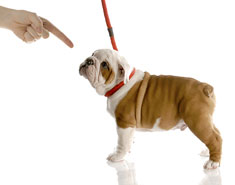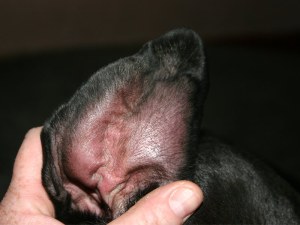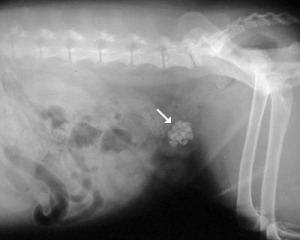
Finding the right dog trainer can be the difference between success and bigger problems. Choose carefully!
Many of the dog owners I see in practice have been to obedience classes or worked with a trainer on a specific behavioral problem in their dogs. When the form they submit lists the trainer(s) they’ve used, I always find out everything I can about those trainers. Why? Because the owners probably listened to the advice given and the dogs were treated by these people. This can affect the dog’s current problems.
Some trainers are absolutely wonderful. They know dogs and dog owners. They have both innate and trained skills that allow them to target their training to specific needs. They understand learning theory, socialization, and public health. And they’re passionate about what they do.
Some trainers are not wonderful. They support the use of abusive techniques that were in practice in the early half of the 20th Century. They eschew treats as “spoiling” the dogs. They will claim they can solve any behavior problem. They tell the owners what medications they should demand from their vets. They often have no actual training of their own – they call themselves “naturals.”
Many, many trainers are somewhere in between.
So, understanding the trainer and her philosophy tells me if there are any “red flags” in a dog’s past training I should explore during the appointment.
I think it’s very important for all dog owners to know how to choose the right trainer for themselves and their dogs, should the need or desire arise. Use these simple guidelines and the right trainer should be within your reach:
- Do a basic Internet search for all the trainers in your area. If you live in a large metro area, you will scale back the search geographically or by Yelp review. If you’re rural, you may not be able to be picky about geographic distance from you. Please note, many training “chains” will advertise themselves in areas they do not even serve. The first thing you should look for in a candidate website is the actual service area.
- Look at the credentials of the 5-10 trainers you want to explore. Ideally, you will see letters like CPDT-KA or KPA-CPT. Dog training has no licensing, therefore, you want to search out trainers who demonstrate that they are continuing their education and following best practices in their field. Trainers who display Certified Professional Dog Trainer or Karen Pryor Academy credentials are demonstrating their willingness to have their knowledge and techniques judged by a body of experts in the field. Other training programs, like the San Francisco SPCA Academy for Dog Trainers, offer well-respected training courses but no national certification. It’s nice, too, if they joined the Association of Pet Dog trainers – but anyone can join and there is not assessment of knowledge or skills.
- Read up on each trainer’s philosophy. Some buzzwords you should know are:
- Balanced Training. This term refers to the “balanced” use of reinforcement (treats, praise) for good behaviors and punishment (leash corrections, other “unpleasant” stimuli) for unwanted behaviors. Its use has increased with the popularity of Cesar Millan; and, like Millan’s methods, owners are to use a “firm hand” when correcting their dogs. The problem is that owners are notoriously bad at timing and choosing appropriate punishments. So, these methods exacerbate aggression and break down the relationship between the dog and the owner. What they typically don’t do is correct a behavior problem.
- Remote Training. This means using a shock collar. Period.
- Pack Leader/Alpha Training. Some misguided trainers still think of pet dogs as “pack” animals. Modern research negates this idea and modern training does not rely on it. Those trainers that want you to be “alpha” to your dog or the “pack leader” are likely to get you bit.
- Protection Training. Did you adopt a Police dog? If not, please stay as far away from “protection” training as possible. Your precious poodle does not need to bite on command. But, neither does your Belgian Malinois.
- Schutzhund Training. Like protection training, Schutzhund is used to train Police dogs. It can also be for search and rescue, basic obedience, odor detection, etc. The bottom line, though, is that most Schutzhund trainers still use aversive training methods. The time requirements and legal responsibilities of owning a dog that is trained to bite can also be prohibitive.
A good trainer should be able to explain her training methods and philosophy in an understandable way. She should be able to demonstrate techniques in a way that owners can understand and copy. A good trainer should make an owner and their dog feel safe, welcome, and capable.
- Ask to visit a class conducted by a few of the trainers that interest you. If the trainer says “no,” drop that trainer from the list. If you like what you see in that class, look at schedules, fees, and other factors to choose the one that’s a best fit for you.
Choosing a trainer is a little like choosing and doctor or dentist. You want to know the schooling, philosophy, and “bedside manner” of your candidates before you commit. Ideally, you and your trainer will have many happy sessions with your increasingly well-behaved dog!
*** Thank you to my friend Nancy Abplanalp, CPDT, for her input!! ***









